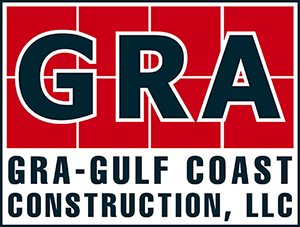The cities and towns of the world are dotted with majestic buildings made from construction materials painstakingly discovered and developed over thousands of years of architectural design. Stone is an eternal but heavy material, wood construction is older than civilization and concrete was invented by the ancient Romans. Given the weight of history, it is understandably easy to overlook newer materials that offer significant advantages over older traditions. One of the most common elements in the universe is iron, and iron can be alloyed with certain other elements to produce a remarkable material called steel. Modern office building construction relies heavily on economical, high-performance steels.
Steel was brought into mass production during the Industrial Revolution, and the bones of modern skyscrapers almost universally are grown with strong, durable steel alloys. In Texas, Houston commercial construction companies are familiar with how steel is everywhere in our civilization. It is easy for many to think of steel as a harsh product forged in smoky, unpleasant infernos, but the truth is far different. Once refined from raw ore in clean, efficient smelters, the iron heart of all steel alloys can be endlessly recycled. In obscure recycling plants and resource-recovery smelters across the planet, old car bodies and junked toasters and obsolete aircraft carriers are torn apart and reborn as shiny new steel products. Iron and the other basic elements that go into steel never wear out.
Every year, busy industrial plants recycle a staggering 500 million tons of steel. An active imagination can easily grasp the picture of the steel from approximately 180 Eiffel Towers yearly being shoveled into furnaces to make new steel that is every bit as strong as the old steel. The shabby remains of old-style buildings may pour endlessly into the gluttonous maws of landfills, but almost no steel passes by the guardians of these graveyards for unwanted junk. Less than one percent of all junked steel each year is lost to inefficient recycling practices, and future reclamation of landfills could still recover that lost steel. It is difficult to find another building material that is so useful yet so easily reused with very little waste.
In an age of environmental consciousness, steel is an underestimated green material that is heavily used by modern Houston industrial construction firms for many commercial and industrial buildings. Quite apart from the obvious advantages of strength and durability, steel buildings can reduce energy consumption in non-obvious ways. Dedicated manufacturers crank out premade components in energy-efficient factories for rapid shipping to construction sites. The carefully engineered sections then require a minimum of expensive labor to fit together, and less fuel is consumed by the fewer machines needed for installing prefabricated walls and other parts. Much like a giant, three-dimensional jigsaw puzzle, a new steel building designed from a preexisting template can go up quickly and without undue fuss. While site-preparation costs remain the same as for conventional techniques, component-centric steel buildings frequently can be completed sooner than with traditional or tilt-up construction and design methods, and many businesses find considerable cost savings from streamlined processes.
Other improvements help with reducing energy costs and lessening the burden on limited natural resources. Special cool coatings for outside walls are popular with businesses that want external heat reflected outwards, reducing cooling bills and increasing comfort for industrial workers and inhabitants of commercial offices. Such steel buildings also contribute less to the problem of heat islands composed of huge clusters of ordinary buildings that soak up great quantities of heat in the daytime and then slowly radiate the stored heat. Nearby residents and workers often experience significant relief from the oven-like conditions that might exist elsewhere in a metropolitan area.
The same cost-effective, environmentally sensitive improvements found in other advanced buildings are frequently included in the prefabricated sections of a steel building. Double-paned or triple-paned windows, transparent window coatings that reduce glare, reflect heat or even generate electricity, high-efficiency insulation for outside walls and ceilings and vapor retarders for concrete foundations all are available as options from many manufacturers. Contrary to an outdated view of steel buildings as austere outposts of functionality, designers at most manufacturers have integrated aesthetic considerations into their components. Attractive facades, finishes and claddings adorn the underlying strength of steel walls to provide a humane environment ready for immediate occupancy.
Another advantage for many businesses is the relative ease of later expansion. A well-designed modular steel building can often be quickly expanded simply by uninstalling a portion of it before adding more prefabricated sections. This contrasts sharply with the messy process of partially destroying and then rebuilding a conventional building. Furthermore, natural disasters are less likely to flatten or seriously damage high-quality steel buildings. In areas struck by earthquakes, hurricanes, tornadoes, floods and other large hiccups from our natural world, emergency workers may note with bemusement the existence of a large number of steel buildings that are standing virtually untouched or with minimal damage amidst a sea of heavily damaged conventional buildings.
Steel buildings have sprouted everywhere in an increasingly energy-efficient, cost-conscious society. Steel-construction toll booths, vending-machine shields, emergency shelters and other applications for prefabricated steel buildings have become common. The special characteristics of steel construction methods are especially popular for wide-open, clear-span applications such as sports facilities, agricultural buildings, workshops, retail centers, warehouses and even churches. No longer confined to aircraft hangars and the bare-bones storage bunkers of a bygone era, highly engineered steel is a modern material for modern buildings.
